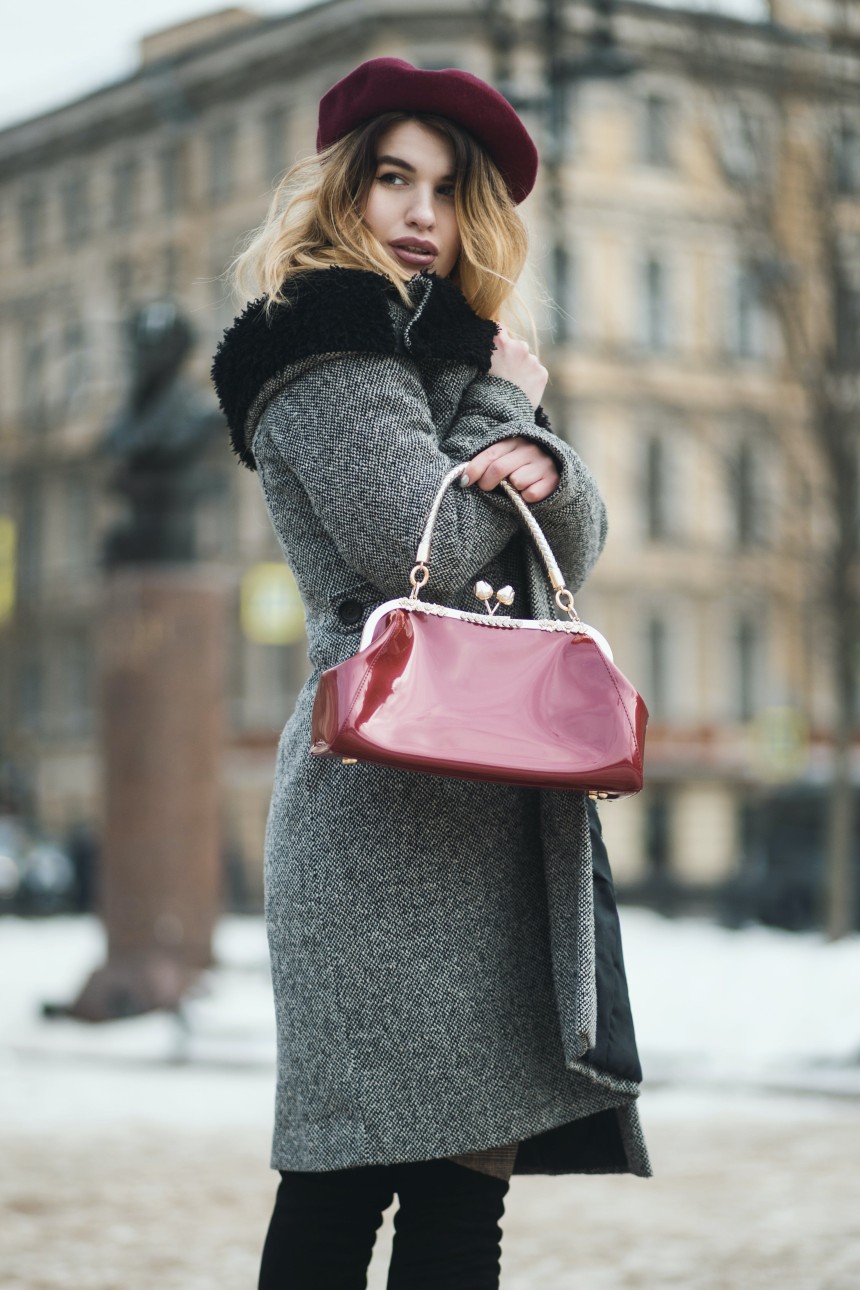
Fashion Forward: Embracing Sustainable Style in the City
Introduction
In the bustling heart of the city, where fashion trends come and go in the blink of an eye, there's a quiet revolution taking place. It's a movement that's redefining not only how we dress but also our impact on the planet. Sustainable fashion, once considered a niche concept, is now at the forefront of urban style, and its influence is growing by the day. In this blog post, we'll explore the rising wave of sustainable fashion in the city, how it's reshaping our wardrobes, and the role you can play in this exciting transformation. From eco-conscious choices to urban thrifting and supporting local sustainable fashion brands, it's time to embrace sustainable style in the city and be part of a positive change.
The Rise of Sustainable Fashion
The Rise of Sustainable Fashion
In recent years, there has been a significant shift in the fashion industry towards more sustainable and eco-conscious practices. This change has been driven by the growing awareness of the environmental impact of fast fashion, a trend that is increasingly being recognized as harmful to our planet.
The Environmental Impact of Fast Fashion
Fast fashion is characterized by the rapid production and turnover of low-cost clothing items, designed to satisfy ever-changing consumer trends. However, this model comes at a high environmental cost. The fashion industry is known to be one of the largest contributors to pollution and waste, with the production of textiles and the disposal of clothing items in landfills generating significant harm to our environment. The heavy use of water, chemicals, and energy in the manufacturing process, as well as the transportation of goods across the globe, contribute to carbon emissions and climate change. The short lifespan of fast fashion items encourages a "throwaway" culture, exacerbating the problem.
Highlighting the Shift towards Eco-Conscious Consumer Choices
Fortunately, there is a growing awareness and shift towards more eco-conscious consumer choices. People are increasingly recognizing the need to make more sustainable fashion decisions. Eco-conscious consumers are opting for products made from eco-friendly materials, supporting brands with transparent and ethical practices, and favoring timeless styles over fleeting trends. Thrifting and upcycling have also gained popularity as sustainable alternatives to buying new clothing.
This shift is driven by an understanding of the urgent need to reduce our ecological footprint. Shoppers are now considering the longevity and versatility of their clothing, embracing the "buy less, choose well" mantra to combat the throwaway fashion culture. By choosing quality over quantity, consumers are making a significant contribution to reducing the environmental impact of their clothing choices.
The Role of Fashion Industry Influencers
Fashion industry influencers, including celebrities, bloggers, and social media personalities, play a crucial role in driving the shift towards sustainability. They have the power to influence consumer behavior and promote eco-friendly brands and practices. Many influencers are now using their platforms to advocate for sustainable fashion choices, encouraging their followers to be more mindful about their clothing purchases and supporting eco-conscious brands.
Sustainable Style in the City
Why Sustainable Fashion is Relevant in Urban Environments
Sustainable fashion has gained immense relevance in urban environments for several compelling reasons. Cities are hubs of culture, innovation, and consumption, making them hotspots for the fashion industry. However, they are also areas with a high population density, limited resources, and notable environmental challenges. This juxtaposition of urban living and sustainability concerns makes sustainable fashion a crucial consideration for city dwellers.
Urban areas are known for their fast-paced lifestyles and consumer-driven culture. In these environments, fashion trends change rapidly, leading to the production of vast quantities of clothing, most of which end up as waste in landfills. Sustainable fashion, with its emphasis on longevity and ethical production, offers an eco-conscious alternative. City dwellers are increasingly aware of their environmental impact and are opting for sustainable choices that align with their urban lifestyle.
The Benefits of Sustainable Style for City Dwellers
The benefits of sustainable style for urban residents are manifold. First and foremost, sustainable fashion promotes eco-friendly and ethical practices. City environments often suffer from pollution and waste, and sustainable fashion can help mitigate these issues. From using organic and recycled materials to reducing carbon emissions during manufacturing and transportation, sustainable fashion aligns with the eco-conscious urban lifestyle.
Moreover, sustainable style often emphasizes quality over quantity. In fast-paced cities, individuals can benefit from investing in timeless, durable clothing that doesn't succumb to the wear and tear of city life. This approach not only reduces the frequency of shopping but also saves money in the long run, which is especially advantageous for city dwellers facing higher living costs.
Examples of Sustainable Fashion Initiatives in Urban Areas
Urban areas worldwide have witnessed the rise of numerous sustainable fashion initiatives aimed at making eco-conscious choices more accessible to city residents. Pop-up thrift stores, eco-friendly clothing brands, and sustainable fashion events have become increasingly popular. Cities like New York and London host eco-fashion weeks, showcasing sustainable designers and their collections. Moreover, clothing rental services have become trendy in urban environments, enabling people to access high-quality, sustainable fashion items without the burden of ownership.
Many urban areas also witness the growth of urban gardens that produce organic materials for local fashion designers. This approach not only reduces the carbon footprint but also supports local businesses and reduces dependency on mass-produced materials.
Tips for Embracing Sustainable Style
Practical Tips for Incorporating Sustainable Fashion Choices
Embracing sustainable style is a meaningful step towards reducing your environmental footprint. Here are some practical tips to help you make eco-conscious fashion choices:
- Buy Less, Choose Well: Invest in timeless, versatile pieces that can be mixed and matched to create a variety of outfits. Quality over quantity is a core principle of sustainable fashion.
- Choose Sustainable Materials: Look for clothing made from sustainable materials like organic cotton, hemp, Tencel, or recycled fabrics. These materials have a lower environmental impact.
- Secondhand Shopping: Thrifting and buying secondhand clothing not only reduce waste but also offer unique and affordable fashion options. Visit thrift stores or explore online vintage shops.
- Support Sustainable Brands: Research and support fashion brands that prioritize ethical and sustainable practices in their production processes. Many brands now offer transparency about their materials and labor conditions.
- Repair and Upcycle: Instead of discarding damaged clothing, consider repairing or upcycling them into something new. It's a creative way to extend the life of your favorite pieces.
Building a Sustainable Wardrobe in the City
Building a sustainable wardrobe in an urban environment may require some adjustment, but it's entirely possible. Here's how you can do it:
- Assess Your Current Wardrobe: Take a close look at your existing clothing and identify items you rarely wear. Donate or sell these pieces to declutter and make space for sustainable additions.
- Plan Your Wardrobe: Create a list of essential clothing items that align with your style and daily needs. Focus on items that are versatile and can be mixed and matched effortlessly.
- Capsule Wardrobe: Consider creating a capsule wardrobe, a collection of a few high-quality, timeless pieces that can be combined in numerous ways. This minimalist approach reduces clutter and simplifies your daily fashion choices.
- Local and Sustainable Shopping: Explore local sustainable fashion stores or markets in your city. Supporting local businesses not only reduces your carbon footprint but also strengthens your community.
The Importance of Responsible Shopping Habits
Responsible shopping habits are at the heart of sustainable style. They not only benefit the environment but also your wallet and overall well-being. Here's why they matter:
- Reducing Waste: Buying fewer, high-quality items reduces textile waste and the burden on landfills, contributing to a cleaner and healthier environment.
- Saving Money: While sustainable fashion may appear more expensive upfront, choosing quality pieces that last longer can save you money in the long run. You'll spend less on frequent replacements.
- Supporting Ethical Practices: By prioritizing brands that adhere to ethical and sustainable practices, you help promote better working conditions for garment workers and reduce the exploitation often associated with fast fashion.
- Mindful Consumption: Responsible shopping encourages more mindful consumption. You'll find joy in your purchases, knowing they align with your values and contribute positively to the world.
Urban Thrifting and Secondhand Fashion
The Appeal and Benefits of Thrift Stores and Secondhand Fashion
Thrifting and embracing secondhand fashion have gained significant popularity in urban environments, and for good reason. The appeal of thrift stores and secondhand fashion goes beyond saving money; it extends to various benefits for individuals and the environment.
- Affordability: Thrift stores offer budget-friendly options for fashionable clothing. You can find quality pieces at a fraction of the price compared to buying brand-new items.
- Unique Finds: Thrifting provides an opportunity to discover one-of-a-kind, vintage, or rare fashion pieces that you won't find in mainstream retail stores. It allows you to express your personal style in a unique way.
- Sustainability: Embracing secondhand fashion is an eco-conscious choice. It reduces the demand for new clothing production, which is resource-intensive and contributes to pollution. Buying secondhand extends the life of clothing items, reducing textile waste and landfill burden.
- Supporting Local Businesses: Many thrift stores are locally owned, and your purchases directly support small businesses in your city, contributing to the local economy.
Tips for Successful Thrift Shopping in a City
Thrifting in a city can be an exciting and rewarding experience. Here are some tips to make your urban thrift shopping successful:
- Research: Before you head out, research thrift stores and secondhand boutiques in your city. Check online reviews and ask for recommendations to find the best places to shop.
- Visit Regularly: Thrift stores receive new items regularly, so make it a habit to visit them frequently to uncover hidden gems.
- Have Patience: Thrift shopping can require patience. You may not find what you're looking for on your first visit, but perseverance often leads to great discoveries.
- Inspect Items Carefully: Examine items for any defects or signs of wear. Check zippers, buttons, and seams to ensure they're in good condition. Don't forget to try on clothing to ensure they fit well.
The Environmental Advantages of Buying Secondhand
Buying secondhand fashion has a significant positive impact on the environment:
- Reduces Fashion Waste: The fashion industry generates substantial textile waste. Buying secondhand extends the life of clothing items, preventing them from ending up in landfills.
- Saves Resources: The production of new clothing consumes vast amounts of water, energy, and raw materials. By choosing secondhand, you reduce the demand for these resources.
- Lower Carbon Footprint: The transportation and manufacturing of new clothing contribute to carbon emissions. Buying secondhand items reduces the environmental impact associated with the fashion supply chain.
- Promotes Circular Economy: Thrifting is a key component of the circular economy, where products are reused and recycled, reducing the need for new production and waste.

Sustainable Fashion Brands in the City
Showcasing Local Sustainable Fashion Brands in Urban Areas
Urban environments are often teeming with creativity, innovation, and conscious consumerism. Many local sustainable fashion brands have emerged in cities, offering unique and eco-friendly clothing options. These brands not only cater to the fashion-forward urban crowd but also contribute to the local economy while prioritizing ethical practices.
1. Urbanite Apparel (New York City): Urbanite Apparel specializes in streetwear made from sustainable materials like organic cotton and recycled fabrics. They infuse urban culture with eco-conscious designs, proving that style and sustainability can go hand in hand.
2. CityChic Creations (Los Angeles): CityChic Creations produces chic and sustainable clothing for women. Their focus on eco-friendly materials and ethical production practices has garnered a dedicated following in the city.
3. EcoUrban Footwear (London): In the heart of London, EcoUrban Footwear is a pioneer in sustainable footwear. They use innovative materials, like mushroom leather and recycled rubber, to craft stylish and eco-conscious shoes for urbanites.
Highlighting Their Unique Offerings and Ethical Practices
Local sustainable fashion brands in urban areas are known for their distinctive offerings and ethical practices. They often prioritize the use of sustainable materials, responsible manufacturing, and transparent supply chains. Their unique offerings not only cater to fashion-conscious consumers but also appeal to those who value eco-friendly choices.
1. Sustainable Materials: Many local brands use sustainable materials like organic cotton, Tencel, bamboo, or recycled fabrics to create eco-friendly clothing that doesn't compromise on style.
2. Ethical Production: These brands often adhere to ethical production practices, ensuring fair wages and safe working conditions for their employees. They take pride in supporting local communities and promoting social responsibility.
3. Transparent Supply Chains: Local sustainable brands are known for their transparent supply chains, providing consumers with insights into the sourcing and manufacturing of their products. This transparency fosters trust among customers.
Discuss How to Support and Promote These Brands
Supporting and promoting local sustainable fashion brands in urban areas is essential for their growth and for encouraging eco-conscious consumer choices. Here are some ways to do so:
1. Shop Locally: Whenever possible, buy from local sustainable fashion brands. This supports the local economy and reduces the environmental impact of long-distance shipping.
2. Spread the Word: Share your positive experiences with these brands on social media, leave reviews, and recommend them to friends and family. Word-of-mouth promotion can be a powerful tool.
3. Attend Local Events: Participate in local fashion events, pop-up shops, and eco-fashion shows featuring these brands. Your presence and support can make a significant difference.
4. Collaborate and Partner: If you run a blog, vlog, or have an online presence, consider collaborating with these brands for reviews or features. Highlight their unique offerings and ethical practices to your audience.
The Power of Community and Education
Emphasizing the Role of Local Communities in Promoting Sustainable Fashion
Local communities play a pivotal role in promoting sustainable fashion within urban areas. They provide a nurturing environment for like-minded individuals to come together, exchange ideas, and drive change collectively. Here's how local communities contribute to the sustainable fashion movement:
1. Collaboration: Community initiatives often involve collaborations between local businesses, designers, and consumers, fostering a supportive network that encourages sustainability.
2. Awareness Campaigns: Communities can organize events, workshops, and awareness campaigns that educate people about the environmental impact of fast fashion and the benefits of sustainable choices.
3. Thrifting and Swap Events: Many communities host thrift markets, clothing swaps, and secondhand fashion events that not only promote sustainable consumption but also create a sense of camaraderie among participants.
4. Local Advocacy: Grassroots organizations within communities can advocate for sustainable fashion practices and influence local policies, supporting eco-friendly and ethical fashion choices.
Discuss the Value of Education and Awareness in Driving Change
Education and awareness are essential drivers of change in the sustainable fashion landscape. They empower individuals to make informed decisions and inspire a collective shift towards sustainability. The value of education and awareness includes:
1. Informed Choices: Education provides consumers with the knowledge to make informed choices when it comes to clothing purchases. This awareness helps them select brands and products that align with their values.
2. Environmental Impact: Understanding the environmental impact of fashion encourages consumers to reduce their carbon footprint and make responsible choices.
3. Ethical Considerations: Awareness of the ethical issues within the fashion industry, such as fair labor practices and supply chain transparency, motivates consumers to support brands that prioritize these values.
4. Long-Term Change: As people become more educated about sustainable fashion, they pass their knowledge on to friends and family, creating a ripple effect of change within their communities.
Share Resources and Organizations that Support Sustainable Style in the City
Several resources and organizations support the growth of sustainable style in urban areas. By connecting with these entities, individuals can access valuable information and engage with like-minded communities. Here are some resources to consider:
1. Sustainable Fashion Organizations: Look for local and national organizations dedicated to sustainable fashion, such as the Sustainable Apparel Coalition, Fashion Revolution, and local eco-fashion groups.
2. Fashion Sustainability Courses: Enroll in courses or workshops that focus on sustainable fashion practices, available through universities, community colleges, and online platforms.
3. Sustainable Fashion Blogs and Publications: Stay updated with sustainable fashion trends and news by following eco-conscious fashion bloggers and reading publications dedicated to sustainable style.
4. Eco-Friendly Fashion Retailers: Support eco-friendly fashion retailers and brands that prioritize sustainability and ethical production.
FAQS
Q: How can I make my wardrobe more sustainable?
A: Start by choosing clothing made from sustainable fabrics like organic cotton or hemp. Thrifting and embracing minimalism are also great options.
Q: What are some eco-friendly materials used in fashion?
A: Eco-friendly fabrics include organic cotton, Tencel, bamboo, and recycled materials, all of which reduce environmental impact.
Q: Are there sustainable fashion brands I can support?
A: Yes, many brands prioritize sustainability and ethical practices. Look for certifications like Fair Trade and organic materials when shopping.
Q: How can I make my city life more eco-conscious?
A: Use public transport, recycle, reduce waste, and support local businesses, especially farmer's markets for fresh produce.
Q: Is sustainable fashion expensive?
A: Sustainable fashion can be budget-friendly when you thrift, curate a minimalistic wardrobe, and choose brands with affordable eco-friendly options.
Q: Why is sustainable fashion important?
A: Sustainable fashion reduces environmental impact, promotes ethical practices, and encourages responsible consumer choices.
Conclusion
As we've journeyed through the world of sustainable fashion in the city, it's clear that this movement is more than just a trend; it's a lifestyle, a commitment to a better future for our planet and ourselves. From reducing our carbon footprint to supporting local businesses and communities, embracing sustainable style in the city is a powerful choice. Every eco-conscious decision you make, every ethical purchase you endorse, contributes to a brighter and more sustainable urban fashion landscape. So, as you navigate the vibrant streets of your city, let your clothing be a statement – a statement that says you care about the environment and the future. It's time to be fashion forward with a purpose, making the city not only a stylish but also a sustainable place to call home.
RELATED POST:
Our Favorite ZARA Dresses That Make Great Wedding Dress Attire



